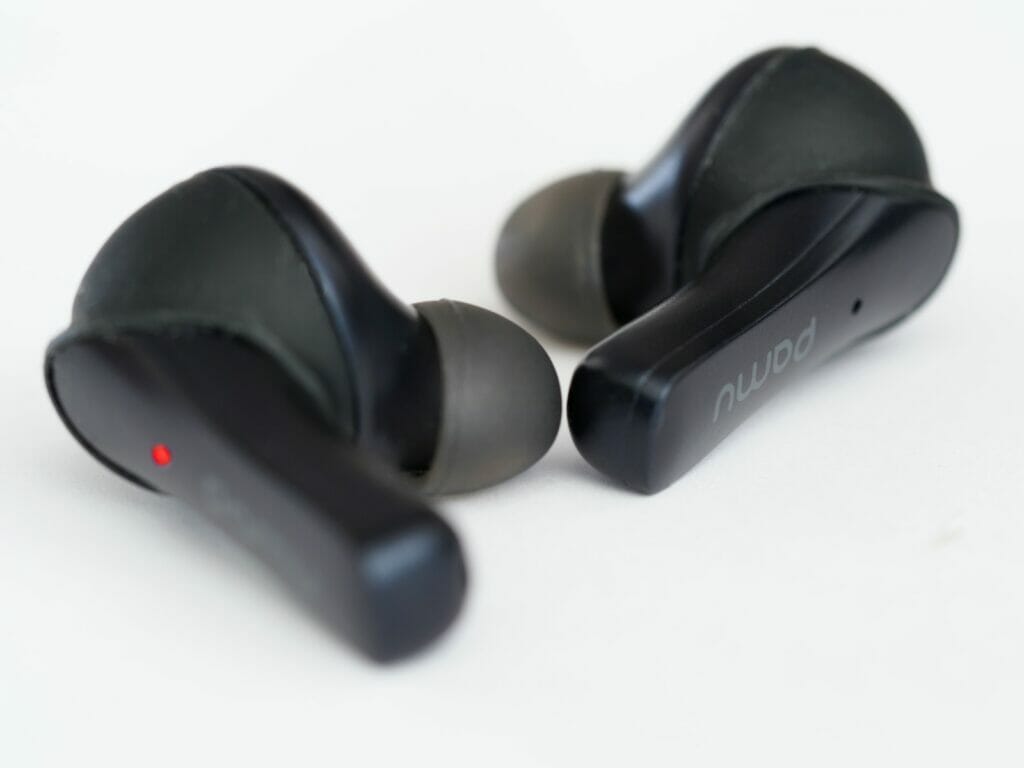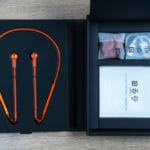Bluetooth headphones have gained immense popularity in recent years due to their convenience and functionality. With the rise in usage, concerns have also arisen regarding the potential health risks associated with these devices.

One of the primary concerns is whether Bluetooth headphones can cause cancer. Understanding Bluetooth technology and the type of radiation emitted by these devices is crucial in determining their potential health risks.
While some might argue that exposure to Bluetooth radiation may contribute to an increased risk of cancer, currently, there is no concrete evidence to support this claim.
In fact, many sources, like Verywell Health and Cancer Treatment Centers of America, suggest that Bluetooth headphones are not harmful in causing brain cancer. However, it’s still wise to use them in moderation and take necessary precautions to minimize potential risks.
Key Takeaways
- Bluetooth headphones have no solid evidence to suggest they cause cancer.
- Radiation exposure from Bluetooth devices is significantly low compared to other daily sources.
- Using Bluetooth headphones in moderation and following safety guidelines can help minimize potential health risks.
Understanding Bluetooth Technology

Bluetooth technology is a widely used wireless communication method that connects various devices over short distances. It enables data transfer between your devices, such as your smartphone and your wireless headphones, without the need for a physical connection. In this section, you will learn the basics of Bluetooth technology and its relation to radio frequency waves.
Bluetooth uses radio frequency (RF) waves for communication, operating in the 2.4 GHz frequency band. This frequency range is shared by many other wireless devices, such as Wi-Fi routers and cordless phones. Although RF waves are a form of electromagnetic radiation, they are much less powerful than ionizing radiations like X-rays or gamma rays, which have been linked to cancer risks.
To establish a connection, your Bluetooth devices must first “pair” with each other. When you turn on the Bluetooth function on your smartphone and bring it near a headset or speaker, they will detect each other and establish a connection. Once connected, your devices will exchange data, allowing you to listen to music, take phone calls, or control other features.
There are several benefits to using Bluetooth technology:
- Wireless convenience: No need for tangled cables or restricted mobility; you can move freely while using your devices.
- Energy efficiency: Bluetooth devices consume less power compared to other wireless methods, extending the battery life of your devices.
- Compatibility: The standardization of the technology ensures that most Bluetooth devices can work together, regardless of the manufacturer.
Since Bluetooth operates at relatively low power levels, health concerns regarding its use have been raised. Specifically, the question of whether Bluetooth headphones might cause cancer due to RF exposure.
However, it is essential to understand that the exposure levels from Bluetooth devices are significantly lower than those from other RF-emitting devices like cellphones. Current research indicates that there is no conclusive evidence linking Bluetooth technology to increased cancer risks.
What is Radiation?

Radiation is energy that travels through space in the form of particles or waves. It can be classified into two main types, ionizing radiation and non-ionizing radiation.
Ionizing radiation has enough energy to remove tightly bound electrons from atoms, which can lead to changes in the chemical composition of the material. Some examples include X-rays, gamma rays, and particles from radioactive decay. Exposure to high levels of ionizing radiation can be dangerous and may increase your risk of developing cancer.
On the other hand, non-ionizing radiation has lower energy levels and cannot remove electrons from atoms. It typically includes radio waves, microwaves, infrared radiation, and visible light. Non-ionizing radiation is generally considered less harmful as its energy isn’t enough to directly cause severe damage to cells or cellular components.
Electromagnetic radiation (EMR) can be found in both ionizing and non-ionizing forms. Here is a brief overview of the electromagnetic spectrum:
- Radio waves (non-ionizing)
- Microwaves (non-ionizing)
- Infrared radiation (non-ionizing)
- Visible light (non-ionizing)
- Ultraviolet radiation (ionizing)
- X-rays (ionizing)
- Gamma rays (ionizing)
The amount of radiation you are exposed to in daily life differs depending on various factors like the devices you use, your environment, and more. For instance:
- Radio waves emitted by telecommunication devices, such as cell phones and wireless networks
- Infrared radiation produced by heat lamps, remote controls, and some security systems
- Visible light from the sun or artificial sources, like lamps and screens
Remember, ionizing EMR is the form of radiation with the potential to cause harm, and non-ionizing EMR, such as Bluetooth technology, is less likely to pose significant risks.
Regardless, it’s essential to be aware of your exposure levels and take necessary precautions, especially when using devices that emit non-ionizing radiation for extended periods.
Bluetooth and Exposure to Radiation

When it comes to Bluetooth headphones, many people are concerned about the potential risks associated with radiation exposure. Bluetooth technology, like other wireless devices such as cell phones, emits a form of low-frequency radiation known as non-ionizing radiation. Let’s take a closer look at what this means.
Non-ionizing Radiation
Non-ionizing radiation is the type of radiation Bluetooth headphones produce. Unlike ionizing radiation, which is known to cause cancer, non-ionizing radiation is generally not considered harmful to humans. According to the Food and Drug Administration (FDA), routine exposure to non-ionizing radiation is “generally perceived as harmless to humans.”
Here are some key differences between ionizing and non-ionizing radiation:
- Ionizing radiation: High energy, capable of removing tightly bound electrons from atoms, leading to DNA damage and increased risk of cancer (e.g., X-rays, gamma rays, and some ultraviolet radiation).
- Non-ionizing radiation: Lower energy, cannot remove electrons from atoms, generally considered harmless to humans (e.g., Bluetooth, Wi-Fi, and visible light).
Bluetooth Radiation and Headphone Use
Using Bluetooth headphones certainly exposes you to some level of non-ionizing radiation. However, the amount is typically much lower than that of a cell phone. Bluetooth devices emit radiation at a much shorter range and lower power level compared to cell phones. This difference in range and power level suggests a lower overall exposure.
Even though there is no conclusive evidence to support a direct link between Bluetooth headphones and cancer, it’s important to be aware of potential risks and follow some general safety tips:
- Choose wired headphones whenever possible.
- Limit the duration of your Bluetooth headphone usage.
- Keep your cell phone and other Bluetooth devices away from your body when not in use.
By following these tips and staying informed about potential risks, you can make smart choices when it comes to your technology usage and overall well-being.
The Science Behind the Claims

As a user of Bluetooth headphones, you might have heard some concerns regarding their potential connection to brain cancer. It’s important to understand the science and evidence behind these claims, so you can make an informed decision about your headphone use.
Firstly, it’s important to note that Bluetooth technology uses radio frequency (RF) waves. RF waves are a type of electromagnetic energy considered to be non-ionizing radiation. This means that they don’t have the same ability to damage DNA like ionizing radiation, such as X-rays or gamma rays.
Some scientists have raised concerns that the RF waves emitted by Bluetooth headphones, especially when used for extended periods and in close proximity to the head, might potentially lead to an increased risk of developing brain tumors. While there is literature examining the potential links between RF exposure and brain cancer, the evidence is far from definitive.
Here are a few key points to consider:
- Current research is inconclusive: The studies conducted so far have not been able to provide a definitive connection between Bluetooth headphone usage and an increased risk of brain cancer.
- Limited evidence of harm: The International Agency for Research on Cancer (IARC) has classified RF waves as “possibly carcinogenic” (group 2B), but this classification is based on limited evidence and acknowledges that more research is needed.
- Lower energy levels of Bluetooth: Bluetooth devices emit much lower levels of RF energy compared to other wireless devices like cell phones. This suggests that the risk associated with Bluetooth headphones is likely to be lower as well.
Despite these points, it’s still essential for scientists to continue researching the potential health effects of Bluetooth headphones. As more studies are conducted and evidence accumulates, our understanding of the risks and safety implications will grow and become more clear.
Health Risks

When it comes to wireless Bluetooth headphones, you might have heard some rumors about potential health risks. It’s essential to understand these risks and how they may impact you.
One primary concern regarding Bluetooth headphones is radiofrequency radiation (RFR) exposure. Bluetooth devices emit low levels of non-ionizing radiation. While exposure to low amounts of this type of radiation is not harmful to humans, some people are worried about the long-term effects of constant RFR exposure.
Some potential health risks associated with chronic RFR exposure include:
- Cancer
- Genetic damages
- Neurological disorders
- Learning and memory deficits
- Reproductive issues
However, it’s important to note that there is currently not enough evidence to definitively say that wireless headphones are dangerous. The scientists who have warned about these risks are only concerned about potential issues. Furthermore, the Food and Drug Administration (FDA) assures that exposure to low levels of non-ionizing radiation is not harmful to humans.
To minimize these potential risks, you can follow some simple practices:
- Limit the time spent using Bluetooth headphones
- Use wired headphones instead, when possible
- Keep your phone and other Bluetooth devices away from your body when not in use
So, while there’s no concrete evidence linking Bluetooth headphones to cancer or other severe health issues, it’s always wise to stay informed and be cautious with their usage.
Safety Guidelines and Recommendations

When it comes to using Bluetooth headphones, it’s essential to follow safety guidelines and recommendations from reputable organizations such as the World Health Organization (WHO), the United Nations (UN), the Centers for Disease Control and Prevention (CDC), the International Agency for Research on Cancer (IARC), and the Federal Communications Commission (FCC).
The primary concern with Bluetooth headphones is the low levels of nonionizing radiation they emit. While the WHO states that exposure to low amounts of this type of radiation is not harmful to humans, it’s still wise to take precautions.
Here are some safety guidelines to follow when using Bluetooth headphones:
-
Use headphones for a limited time: Avoid using your Bluetooth headphones for long periods. Take breaks in between and avoid using them for hours on end.
-
Keep devices away from your body: When not in use, store your headphones and other Bluetooth devices away from your body.
-
Switch ears: Alternating ears when using a single Bluetooth earbud is a good way to distribute exposure to any potential radiation.
-
Limit the number of Bluetooth devices: Reducing the number of Bluetooth devices you use at once can potentially lower your overall exposure to nonionizing radiation.
-
Choose wired headphones when possible: If you’re concerned about radiation exposure, consider using wired headphones instead of Bluetooth ones.
Following guidelines and recommendations from organizations like the WHO, UN, CDC, IARC, and FCC can help ensure that you use Bluetooth headphones safely.
Public Awareness and Concern

In recent years, you might have noticed an increase in public awareness and concern regarding the potential health risks of Bluetooth headphones. Much of this concern can be traced back to a petition submitted by a group of over 200 scientists to the World Health Organization (WHO) and United Nations (UN), expressing concerns about the possible effects of exposure to radiofrequency (RF) energy from wireless devices.
The Centers for Disease Control and Prevention (CDC) and the World Health Organization acknowledge that further research is needed to understand the potential long-term effects of exposure to RF energy. There are some precautionary measures you can take based on current knowledge:
- Limiting your usage of Bluetooth headphones
- Keeping the device at a distance from your body when not in use
- Alternating between using wireless and wired headphone options
Although the existing studies have not shown any clear evidence linking Bluetooth headphones to an increased risk of cancer, there are concerns about long-term exposure to RF energy, especially in young children. Commonly reported effects from those with prolonged exposure to electromagnetic fields (EMFs) include headaches, Ringxiety phantom phone buzzing sensation, and difficulty concentrating.
To be more informed about this issue, you should be aware of some key organizations:
- WHO (World Health Organization): This international group is working on understanding the health effects of exposure to EMFs and providing guidance on their potential risks and average safe dosages.
- CDC (Centers for Disease Control and Prevention): This US-based public health agency conducts research on various health topics, including the potential effects of exposure to EMFs from wireless devices like Bluetooth headphones.
While there is no definitive evidence linking them to an increased risk of cancer or tumor development, it’s a good idea to use them responsibly and keep an eye on any emerging information from credible organizations like the WHO and CDC.
Alternative Solutions

If you’re concerned about the potential risk of cancer from Bluetooth headphones, there are alternative solutions you can consider to continue enjoying your music and phone calls with peace of mind. By choosing alternatives, you can reduce exposure to radiation while still experiencing high-quality audio.
Wired Headphones
One option is to switch to wired headphones. Wired headphones are a reliable, low-tech choice that eliminates the need for Bluetooth radiation. They provide a direct connection to your device, which can offer better audio quality and a stable connection without concern for any potential health risks.
Apple AirPods Wired Alternative
While Apple AirPods are popular for their wireless convenience, you can opt for a similar Apple product without the Bluetooth feature. Apple’s EarPods offer the classic design that fits comfortably in your ears and connects to your device through a wire. They are compatible with most iPhones and include a built-in remote and microphone for easy accessibility.
Reducing Exposure
Consider these easy-to-follow tips to reduce radiation exposure:
- Limit the duration of usage – Be mindful of the time you spend using your headphones or earphones.
- Use speakerphone – When possible, use your device’s speakerphone feature instead of headphones for phone calls.
- Increase distance – Keep your device away from your body when not in use.
By exploring these alternative solutions, you can continue to enjoy your favorite tunes and maintain a healthy lifestyle. Remember, it’s always a good idea to balance convenience with safety and stay informed about potential risks.
Conclusion

In summary, the concerns about Bluetooth headphones causing cancer mainly stem from the radiation they emit. However, it is important to understand the type of radiation and its health risks.
Bluetooth Radiation
Bluetooth devices, including headphones, emit radiofrequency (RF) waves, a form of electromagnetic radiation. These RF waves are much weaker than ionizing radiation, which is known to cause cancer. Ionizing radiation includes X-rays and gamma rays, which are much more potent forms of radiation.
You can think about the potential risks associated with different types of radiation by comparing their levels:
- Ionizing radiation (X-rays, gamma rays) – High risk
- Radiofrequency (RF) waves (bluetooth devices, cell phones) – Low risk
- Extremely low frequency (ELF) radiation (power lines, household appliances) – Minimal risk
Current Research and Expert Opinions
As of now, research regarding the link between Bluetooth headphones and cancer is limited, and most experts agree that there is insufficient evidence to conclusively say that Bluetooth headphones pose a significant risk to users. Additionally, the World Health Organization (WHO) classifies RF radiation emitted by Bluetooth devices as potentially carcinogenic, meaning that more research is needed to make a definitive conclusion.
Precautions You Can Take
If you’re still concerned about the potential health risks of using Bluetooth headphones, you can take a few precautions:
- Use wired headphones instead of wireless ones.
- Limit the duration of your Bluetooth headphone usage.
- Maintain a safe distance from other devices emitting RF waves.
While it’s natural to be cautious about potential health risks, it’s important to remember that the current evidence does not directly link Bluetooth headphones with an increased risk of cancer. So, you can continue to enjoy your favorite music through your wireless headphones without major concerns until more concrete research emerges.






